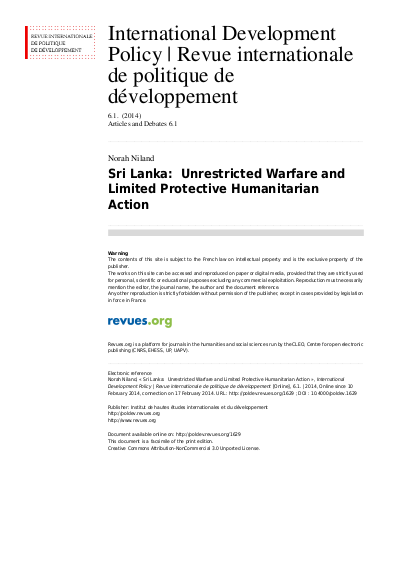
In 2009, tens of thousands of civilians perished in the final months of the brutal Sri Lankan war that began in 1983. They died as a direct result of armed conflict and the political and military strategies of the warring parties, compounded by the international community’s collective prioritization of geopolitical considerations over the action needed to curb unrestricted warfare. The United Nations (UN), as well as various other political, human rights, and humanitarian actors, failed to effectively challenge the inhumanity that led to the death of 40-70,000 civilians (Keenan, 2012; Internal Review Panel on United Nations Action in Sri Lanka (IRP), 2012: 14). In the immediate aftermath of the war, humanitarians were reluctant to confront the full scale of the protection problems inherent in the internment of some 300,000 of the war’s survivors in militarised camps (Nash, 2012: 2).
This article focuses on humanitarian decision-making during the end phase of the war. It does not address the underlying causes and dynamics of the armed conflict, or the failure of development and human rights initiatives to address the structural fault-lines at the heart of the crisis in Sri Lanka. The first section provides a snapshot of the historical and political context that shaped the operating environment in which relief programming was implemented. The following section analyses events as the war came to its bloody end, examining the poor definition of humanitarian life-saving, the critical role of data as death and deprivation took its toll, and the consequences of a decision-making paradigm that relied on a false dichotomy between getting access to people in need and their need for protection from all-out war. The subsequent section on internment reviews the way in which the relief system grew to be implicated in assisting closed camps where many inmates were abused, even as material conditions improved over time. The final section provides an analysis of the significance of the Sri Lankan experience for humanitarian action in other crisis settings.